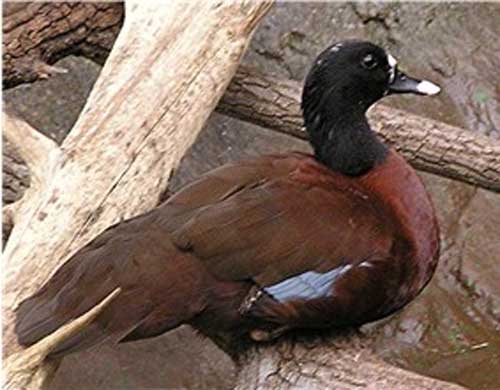
Pteronetta hartlaubii (*)
Superregnum: Eukaryota
Cladus: Unikonta
Cladus: Opisthokonta
Cladus: Holozoa
Regnum: Animalia
Subregnum: Eumetazoa
Cladus: Bilateria
Cladus: Nephrozoa
Superphylum: Deuterostomia
Phylum: Chordata
Subphylum: Vertebrata
Infraphylum: Gnathostomata
Megaclassis: Osteichthyes
Cladus: Sarcopterygii
Cladus: Rhipidistia
Cladus: Tetrapodomorpha
Cladus: Eotetrapodiformes
Cladus: Elpistostegalia
Superclassis: Tetrapoda
Cladus: Reptiliomorpha
Cladus: Amniota
Classis: Reptilia
Cladus: Eureptilia
Cladus: Romeriida
Subclassis: Diapsida
Cladus: Sauria
Infraclassis: Archosauromorpha
Cladus: Crurotarsi
Divisio: Archosauria
Cladus: Avemetatarsalia
Cladus: Ornithodira
Subtaxon: Dinosauromorpha
Cladus: Dinosauriformes
Cladus: Dracohors
Cladus: Dinosauria
Ordo: Saurischia
Cladus: Eusaurischia
Subordo: Theropoda
Cladus: Neotheropoda
Cladus: Averostra
Cladus: Tetanurae
Cladus: Avetheropoda
Cladus: Coelurosauria
Cladus: Tyrannoraptora
Cladus: Maniraptoromorpha
Cladus: Maniraptoriformes
Cladus: Maniraptora
Cladus: Pennaraptora
Cladus: Paraves
Cladus: Eumaniraptora
Cladus: Avialae
Infraclassis: Aves
Cladus: Avebrevicauda
Cladus: Pygostylia
Cladus: Ornithothoraces
Cladus: Ornithuromorpha
Cladus: Carinatae
Parvclassis: Neornithes
Cohors: Neognathae
Cladus: Pangalloanserae
Cladus: Galloanseres
Ordo: Anseriformes
Familia: Anatidae
Subfamilia: Anatinae
Genus: Pteronetta
Species: Pteronetta hartlaubii
Name
Pteronetta hartlaubii (Cassin, 1859)
Original combination: Querquedula hartlaubii
References
Proceedings of the Academy of Natural Sciences of Philadelphia 11["1859"] p.175
Vernacular names
čeština: Pižmovka konžská
English: Hartlaub's Duck
suomi: Kanelisorsa
français: Ptéronette de Hartlaub
日本語: シラガガモ
Nederlands: Hartlaubs eend
norsk: Mahogniand
svenska: Skogsand
Hartlaub's duck (Pteronetta hartlaubii) is a dark chestnut-coloured duck of African forests. Formerly included in the paraphyletic "perching duck" assemblage, it was later moved to the dabbling duck assemblage.[2] However, it is fairly distinct from the "typical" dabbling ducks, and is placed in the monotypic genus Pteronetta to reflect this.
Analysis of mtDNA sequences of the cytochrome b and NADH dehydrogenase subunit 2 genes suggests that it belongs into a very distinct clade—possibly a subfamily of its own—together with the blue-winged goose, another African species of waterfowl with uncertain affinities.[3]
Description
Hartlaub's duck swimming
On average, Hartlaub's ducks range from 56-58 centimeters in height. This species of duck is monotypic, meaning there is only one type of this species. Juveniles have feathers with pale tips on their breast and abdomen. Their adult coat is fully grown after six months. Adult males weigh between 925 and 1140 grams, and they have a white head with reddish-brown eyes. The females have barely any white on their heads, have dark red eyes, and weigh between 770 and 805 grams. The amount of white on each duck’s head will vary. Both sexes have a blue patch on their wing that distinguishes them from other waterfowl. During mating season, the base of the male’s bill will enlarge.[4]
Distribution
Hartlaub's duck is resident in equatorial West and Central Africa, from Guinea and Sierra Leone east through Nigeria to South Sudan, and south to Gabon, Congo and Zaire.
This bird is named after the German naturalist Gustav Hartlaub.[5]
Hartlaub’s ducks reside in swampy marshes, tropical forests, savanna areas, rivers, and streams. In Liberia, they live in mangroves. However, they will only gather in flocks in Liberia from January to May. Year-round, they will live in parts of central western Africa, including the Democratic Republic of Congo and Cameroon.[4]
Behavior
In flight, Hartlaub’s ducks will quack “ko-ko-ko-ko” or “kakakakarr.” Their conversational sounds are “whit-whit-whit.” When threatened, the males will quack a fast “wheezy whistle.” When juveniles are in distress, they will give three calls in evenly spaced quick descending notes.[4]
Their diet consists of aquatic invertebrates, such as insects and crustaceans. The Republic of Congo’s Nouabalé-Ndoki National Park reports that the ducks regularly feed on the insects found in elephant dung. They’ll also eat seeds and insect larvae. To remove ectoparasites, these ducks have been observed jumping onto the backs of bongo and forest buffalo. They are most active in the early morning and evening.[4]
Breeding
There is no evidence of nests, but they mate during rainy seasons in the months of June to September. The females lay cream-colored eggs, and the chicks have sooty-black heads, yellowish bodies, and an additional orange tinge to the chin, neck, and face. These chicks weigh approximately 35-46 grams upon hatching.[4]
Population
This species exhibits an expansive range, preventing it from meeting vulnerable criteria based on range size, habitat quality, and population limits. Despite a declining population trend, it does not demonstrate the rapidity required to warrant worrying over the possibility of distinction or at-risk status. The population size, varying from moderately small to large, also falls short of vulnerable thresholds. Consequently, this species is designated as "Least Concern" because of its extensive range and stable population count. [6]
Conservation
In 2006, there were reported to be between 26,000 and 110,000 Hartlaub’s ducks in the world.[6] Hartlaub’s ducks were formerly considered threatened, and as of 2020, they are not considered to be threatened.[4] One of the largest threats to the Hartlaub's duck is forest destruction, hunting, and water pollution from mining and poison-fishing. This species is hunted and traded for medicinal purposes in Nigeria.[6]
References
BirdLife International (2016). "Pteronetta hartlaubii". IUCN Red List of Threatened Species. 2016: e.T22680070A92841893. doi:10.2305/IUCN.UK.2016-3.RLTS.T22680070A92841893.en. Retrieved 11 November 2021.
Madge, Steve & Burn, Hilary (1987): Wildfowl : an identification guide to the ducks, geese and swans of the world. Christopher Helm, London, p. 185, ISBN 0-7470-2201-1
Johnson, Kevin P.; Sorenson, Michael D. (1999). "Phylogeny and biogeography of dabbling ducks (genus Anas): a comparison of molecular and morphological evidence" (PDF). Auk. 116 (3): 792–805. doi:10.2307/4089339. JSTOR 4089339.
"Hartlaub's Duck". Retrieved 18 October 2023.
Beolens, Bo; Watkins, Michael (2003). Whose Bird? Men and Women Commemorated in the Common Names of Birds. London: Christopher Helm. pp. 180–159–160.
"Hartlaub's Duck". Retrieved 18 October 2023.
Retrieved from "http://en.wikipedia.org/"
All text is available under the terms of the GNU Free Documentation License

